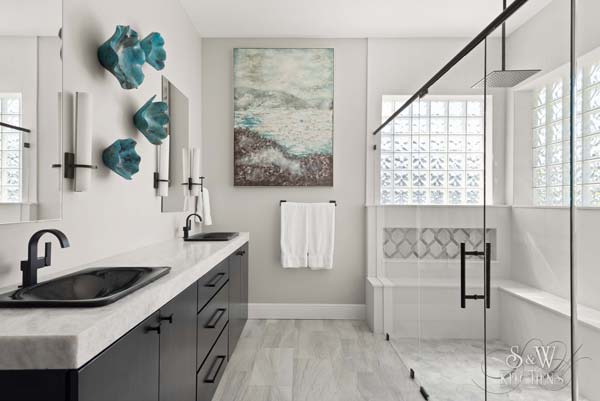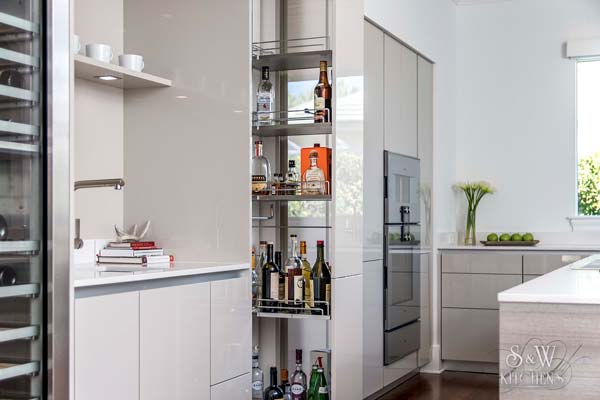Many people are now choosing to remain in their homes well past retirement age. As we age, people are less nimble, shall we say, and consideration needs to be given to modifying certain rooms of the house to ensure that they are both convenient and safe. It turns out, some of these changes can make life more comfortable for people of any age – even those who haven’t yet decided they are ‘old’!

Two rooms that undoubtedly benefit from remodeling for this purpose are the kitchen and bathroom. With just a few basic alterations, they can be perfectly adapted for those who wish to age comfortably in place.
Non-slip floors and rounded corners
Slips and falls are two common problems in the kitchen, where spills are most likely to happen. This, coupled with sharp corners on countertops, means an increased risk of head injuries.
Generally, it’s best to opt for non-slip flooring materials such as vinyl or linoleum. However, with materials like porcelain or ceramic tile, it’s possible to apply a non-slip floor treatment. Countertops with rounded edges provide further protection from harm.
More accessible countertops and storage
Another important consideration in the kitchen is making sure everything is accessible. Pull-out shelving units and pantries help to make lower cabinets and food cupboards easier to reach. They also reduce the risk of back strain when retrieving heavy items such as pots and pans while maximizing storage space.
Multi-level countertops can also be used for increased choice and maneuverability; people can select the one most comfortable for them. Some are designed specifically for use with seating – so two hours making Mama’s special spaghetti sauce goes a bit easier!

Better lighting and contrasting colors
Lighting in older homes was often a neglected part of the design. Countertops and corners were frequently left in shadow, making it difficult to use these areas. Installing lighting here and in storage spaces can make cooking and other kitchen-related tasks much more manageable.
Using contrasting colors in decoration can also make things easier to spot. Countertop designs with a noticeably different color around the edges or utensils that are markedly different in tone from the décor all serve to make life a little easier.
Walk-in tub and low threshold shower installations
When it comes to the bathroom, one of the biggest problems is slipping or tripping while getting into the bath or shower. It can be tough to balance on these slippery surfaces while lifting a leg over the side. With showers it’s better to have a low- or even no-threshold to reduce the risk. Grab bars can be used for additional support (see below). As for those bathtubs that come with specially designed doors, I’ve always imagined having to sit in an empty tub while it fills and then wait until it gets almost completely empty before I can get out! No thank you!
A higher toilet or add on
There is a standard size for toilets, but this can be a little too low for those who struggle to sit and stand without help. There are two main options when it comes to making aging-in-place adjustments here.
The first is to simply purchase a new toilet that stands higher than a conventional one to replace the existing one. The second option is to get a toilet seat extender. This attaches to the current seat providing a little extra height as needed.
Grab bars and safety handles
Installing grab bars is an economical way of drastically increasing safety in the bathroom. They are available in a multitude of colors and designs, so it’s quite simple to find one to match the existing décor.
These handy devices can be attached to the wall in places such as in the shower or by the toilet. They provide a little extra help and support for moving about and using the room.
